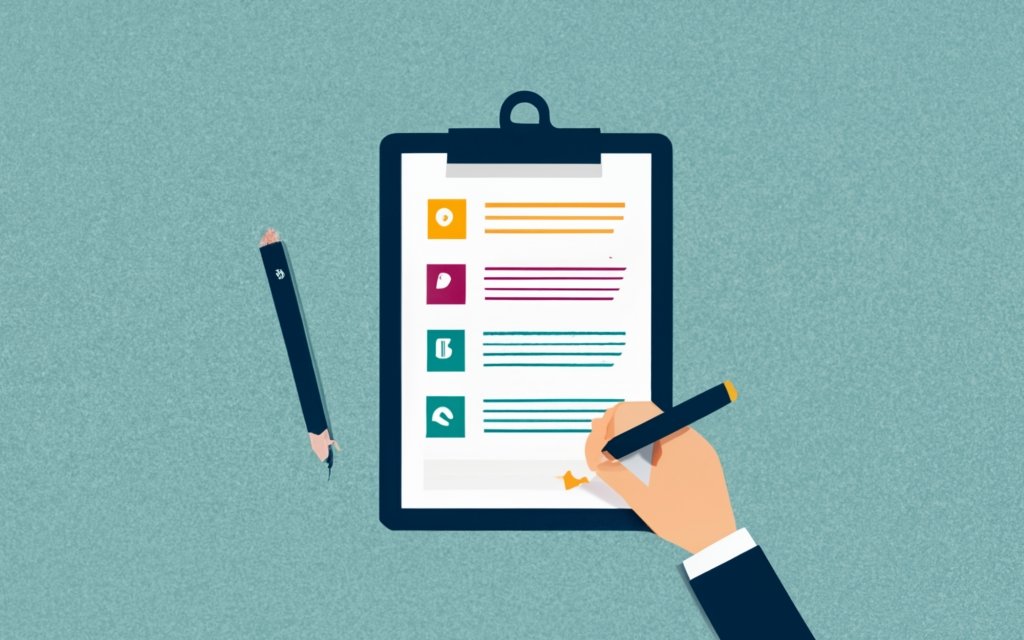If you are an exporter of goods, you may have heard of a document called a Shipper’s Letter of Instructions (SLI). This document is essential for ensuring that your shipment is handled properly by your freight forwarder and that it complies with all the relevant domestic and international regulations. But what exactly is an SLI and how do you prepare one? In this article, we will answer these questions and provide you with a step-by-step guide to creating an SLI for your export shipments. We will also share some tips and best practices for streamlining your shipping process with an SLI and some tools and resources that can help you with this task.
What is a Shipper’s Letter of Instructions (SLI)?

A Shipper’s Letter of Instructions (SLI) is a shipping document, generated by the exporter, that provides transportation and documentation instructions for a freight forwarder or carrier. It can also authorize the forwarder to act on behalf of the exporter and to transmit Electronic Export Information (EEI) to the Automated Export System (AES). EEI is the electronic declaration of merchandise leaving the U.S. for export to a foreign country and it is required for most shipments.
An SLI is not a mandatory document, but it is highly recommended for several reasons. First, it helps the exporter to communicate clearly and accurately with the forwarder about the details and requirements of the shipment, such as the mode of transport, the destination, the value, the weight, the dimensions, the packaging, the markings, the insurance, the incoterms, the export license, and the harmonized system (HS) codes3. Second, it helps the forwarder to prepare the necessary export documents, such as the commercial invoice, the packing list, the bill of lading, the certificate of origin, and the export license. Third, it helps the exporter to comply with the Foreign Trade Regulations (FTR), which are the rules governing the reporting of export shipments to the U.S. Census Bureau. Fourth, it helps the exporter to avoid delays, fines, penalties, and other problems that may arise from incomplete, inaccurate, or missing information.
Importance of a Shipper’s Letter of Instructions
An SLI is important for both the exporter and the forwarder, as it serves as a contract and a record of the transaction between them. It also helps to ensure that the shipment is executed smoothly and efficiently, adhering to both domestic and international shipping regulations. Some of the benefits of using an SLI are:
- It reduces the risk of errors and misunderstandings that may lead to shipment delays, losses, damages, or claims.
- It provides the forwarder with the necessary information and authorization to file the EEI on behalf of the exporter, which is required for most export shipments.
- It helps the exporter to comply with the FTR and other applicable government agency regulations, such as the Export Administration Regulations (EAR) or the International Traffic in Arms Regulations (ITAR), which may require specific export licenses, permits, or certifications.
- It helps the exporter to maintain a record of the shipment details and the export compliance status, which may be required for audits, investigations, or disputes.
- It helps the exporter to optimize the shipping costs, time, and quality, by choosing the most suitable mode of transport, carrier, routing, packaging, and insurance.
Key components of a Shipper’s Letter of Instructions

An SLI typically consists of the following sections and fields:
- Exporter information: This section includes the name, address, contact details, and Employer Identification Number (EIN) of the exporter, also known as the U.S. Principal Party in Interest (USPPI). The USPPI is the person or entity in the U.S. that receives the primary benefit, monetary or otherwise, of the export transaction. The EIN is a nine-digit number issued by the Internal Revenue Service (IRS) to identify the exporter for tax purposes. The exporter should also indicate the address or location from which the goods actually begin the journey to the port of export, and the state of origin of the goods.
- Consignee information: This section includes the name, address, and contact details of the ultimate consignee, also known as the Foreign Principal Party in Interest (FPPI). The FPPI is the person or entity abroad that receives the primary benefit, monetary or otherwise, of the export transaction. The ultimate consignee may or may not be the end user of the goods. The exporter should also indicate if the goods are sold en route, meaning that the ultimate consignee is not known at the time of export, and report the actual ultimate consignee information as soon as it is known.
- Intermediate consignee information: This section includes the name, address, and contact details of the intermediate consignee, if any. The intermediate consignee is the person or entity that acts as an agent for the USPPI or the FPPI and takes possession of the goods for the purpose of effecting delivery to the ultimate consignee. The intermediate consignee may be a freight forwarder, a customs broker, a distributor, or a third-party logistics provider.
- Forwarding agent information: This section includes the name, address, and contact details of the forwarding agent, also known as the authorized agent. The forwarding agent is the person or entity in the U.S. that is authorized by the USPPI to facilitate the movement of the goods from the U.S. to the foreign destination and/or to prepare and file the required documentation. The forwarding agent may be the same as the intermediate consignee, or a different entity. The exporter should also indicate if they authorize the forwarding agent to file the EEI on their behalf, and provide the required power of attorney or written authorization.
- Shipment information: This section includes the details of the shipment, such as the date of export, the port of export, the port of unloading, the mode of transportation, the carrier name, the bill of lading or air waybill number, the container number, the seal number, the number and type of packages, the gross and net weight, the dimensions, the marks and numbers, the description of goods, the Schedule B number, the quantity, the unit of measure, the value, the currency, the license number or exemption, the country of ultimate destination, the delivery terms, the payment terms, the insurance coverage, the special instructions, and the declaration of the exporter. The Schedule B number is a 10-digit code that classifies the goods according to the Harmonized System (HS). The license number or exemption indicates the authorization for exporting the goods under the EAR or ITAR, as applicable. The delivery terms, also known as the Incoterms, specify the responsibilities and risks of the exporter and the importer in the shipment. The declaration of the exporter is a statement that certifies the accuracy and completeness of the information provided in the SLI.
Step-by-step guide to preparing a Shipper’s Letter of Instructions

Preparing a Shipper’s Letter of Instructions can be a simple and straightforward process, if you follow these steps:
- Step 1: Choose a format and a template for your SLI. You can use a standard or a customized format, depending on your needs and preferences. You can also use a template provided by your forwarder or by a third-party service provider, such as UPS or Expeditors.
- Step 2: Fill out the basic information of your SLI, such as the date, reference number, exporter, forwarder, ultimate consignee, and intermediate consignee. Make sure to provide accurate and complete information, as this will affect the shipping process and the export compliance.
- Step 3: Fill out the details of your goods, such as the description, quantity, weight, dimensions, value, and origin. Make sure to provide clear and specific information, as this will affect the classification, valuation, and documentation of your goods. You can also attach any supporting documents, such as invoices, packing lists, certificates of origin, or certificates of analysis.
- Step 4: Fill out the export information of your goods, such as the Schedule B number or the HTS code, the export license number or exemption citation, and the AES filing authorization. Make sure to provide correct and consistent information, as this will affect the export declaration and clearance of your goods. You can also attach any supporting documents, such as export licenses, license applications, or license determinations.
- Step 5: Fill out the transportation information of your goods, such as the mode and route of transportation, the carrier and service selection, the insurance and packaging options, and the special instructions or requests. Make sure to provide your instructions and preferences, as this will affect the handling and delivery of your goods. You can also attach any supporting documents, such as bills of lading, air waybills, or shipping labels.
- Step 6: Fill out the terms and conditions of your shipping contract, such as the responsibilities, liabilities, and fees of each party, the payment and invoicing methods, and the dispute resolution procedures. Make sure to read and understand the terms and conditions, as this will affect your rights and obligations as an exporter. You can also attach any supporting documents, such as contracts, agreements, or quotations.
- Step 7: Review and sign your SLI, and send it to your forwarder along with any supporting documents. Make sure to check your SLI for any errors or omissions, as this will affect the accuracy and completeness of your shipping process. You can also keep a copy of your SLI for your records.
Ensuring accuracy and completeness in your Shipper’s Letter of Instructions

Ensuring accuracy and completeness in your Shipper’s Letter of Instructions is crucial for a smooth and efficient shipping process. Here are some tips to help you achieve this:
- Use a reliable and updated source of information for your goods, such as the U.S. Census Bureau website or the U.S. International Trade Commission website, to find the correct Schedule B number or HTS code, the export license requirements, and the export regulations of the destination country.
- Use a consistent and standardized format and terminology for your goods, such as the International Organization for Standardization (ISO) standards or the World Customs Organization (WCO) standards, to describe the goods, the quantity, the weight, the dimensions, the value, and the origin.
- Use a clear and specific language for your instructions and preferences, such as the Incoterms or the Universal Postal Union (UPU) standards, to indicate the mode and route of transportation, the carrier and service selection, the insurance and packaging options, and the special instructions or requests.
- Use a reputable and experienced forwarder or carrier, such as UPS or Expeditors, to handle and transport your goods, to prepare and file your export documents, and to provide you with guidance and support throughout the shipping process.
- Use a digital platform or a software solution, such as Beebolt or IncoDocs, to create and manage your SLI, to automate and streamline your shipping process, and to ensure compliance and traceability of your shipment.
Common mistakes to avoid when preparing a Shipper’s Letter of Instructions
Preparing a Shipper’s Letter of Instructions can be a challenging task, especially if you are new to exporting or if you have a complex or diverse shipment. However, you can avoid some common mistakes that could cause problems or delays in your shipping process, such as:
- Providing incomplete or inaccurate information about your goods, such as the description, quantity, weight, dimensions, value, or origin. This could lead to misclassification, undervaluation, or misdeclaration of your goods, which could result in fines, penalties, or seizures by the customs authorities.
- Providing incorrect or inconsistent information about your export information, such as the Schedule B number or HTS code, the export license number or exemption citation, or the AES filing authorization. This could lead to non-compliance with the export regulations of the United States and the destination country, which could result in fines, penalties, or denials by the export control agencies.
- Providing unclear or vague instructions or preferences about your transportation information, such as the mode and route of transportation, the carrier and service selection, the insurance and packaging options, or the special instructions or requests. This could lead to confusion or misunderstanding with your forwarder or carrier, which could result in delays, errors, or damages in your shipping process.
- Providing unreasonable or unrealistic terms and conditions for your shipping contract, such as the responsibilities, liabilities, and fees of each party, the payment and invoicing methods, or the dispute resolution procedures. This could lead to conflicts or disputes with your forwarder or carrier, which could result in losses, claims, or lawsuits in your shipping process.
Best practices for streamlining your shipping process with a Shipper’s Letter of Instructions

Streamlining your shipping process with a Shipper’s Letter of Instructions can help you save time, money, and hassle as an exporter. Here are some best practices to help you achieve this:
- Use a digital platform or a software solution, such as Beebolt or IncoDocs, to create and manage your SLI, to automate and streamline your shipping process, and to ensure compliance and traceability of your shipment. These tools can help you generate, edit, and share your SLI with your forwarder or carrier, as well as integrate your SLI with other export documents, such as invoices, packing lists, bills of lading, or air waybills. They can also help you validate, verify, and file your SLI with the AES, as well as track, monitor, and update your SLI with the status and location of your shipment.
- Use a standard or a customized format and template for your SLI, depending on your needs and preferences. You can use a standard format, such as the one provided by the National Customs Brokers and Forwarders Association of America (NCBFAA), or a customized format, such as the one provided by your forwarder or by a third-party service provider, such as UPS or Expeditors. You can also use a format and template that is compatible with your digital platform or software solution, such as Beebolt or IncoDocs.
- Use a clear and specific language for your SLI, using the appropriate standards and terminology for your goods, your export information, and your transportation information. You can use the ISO standards or the WCO standards for your goods, the FTR, the EAR, the ITAR, the HS, and the Incoterms for your export information, and the UPU standards for your transportation information. You can also use a language that is understandable and acceptable by your forwarder or carrier, as well as by the customs authorities and the export control agencies of the United States and the destination country.
- Use a reputable and experienced forwarder or carrier, such as UPS or Expeditors, to handle and transport your goods, to prepare and file your export documents, and to provide you with guidance and support throughout the shipping process. These forwarders or carriers can help you select the best mode and route of transportation, the best carrier and service selection, the best insurance and packaging options, and the best special instructions or requests for your shipment. They can also help you comply with the export regulations of the United States and the destination country, as well as any other applicable rules or requirements.
Tools and resources for creating a Shipper’s Letter of Instructions

Creating a Shipper’s Letter of Instructions can be easier and faster with the help of some tools and resources, such as:
- Beebolt: A digital platform that helps you create and manage your SLI, as well as other export documents, such as invoices, packing lists, bills of lading, or air waybills. It also helps you validate, verify, and file your SLI with the AES, as well as track, monitor, and update your SLI with the status and location of your shipment.
- IncoDocs: A software solution that helps you create and manage your SLI, as well as other export documents, such as invoices, packing lists, bills of lading, or air waybills. It also helps you integrate your SLI with other export documents, as well as share your SLI with your forwarder or carrier.
- UPS: A forwarder and a carrier that helps you handle and transport your goods, as well as prepare and file your export documents, such as invoices, packing lists, bills of lading, or air waybills. It also provides you with guidance and support throughout the shipping process, as well as a template for your SLI.
- Expeditors: A forwarder and a carrier that helps you handle and transport your goods, as well as prepare and file your export documents, such as invoices, packing lists, bills of lading, or air waybills. It also provides you with guidance and support throughout the shipping process, as well as a template for your SLI.
- U.S. Census Bureau: A government agency that provides you with information and resources for your export information, such as the Schedule B number or HTS code, the export license requirements, and the export regulations of the destination country. It also provides you with the AES, the system that collects and processes your EEI.
- U.S. International Trade Commission: A government agency that provides you with information and resources for your export information, such as the Schedule B number or HTS code, the export license requirements, and the export regulations of the destination country. It also provides you with the HTS, the system that classifies your goods for export purposes.
- NCBFAA: A trade association that provides you with information and resources for your SLI, such as a standard format and template, as well as a guide and a checklist for preparing your SLI.





